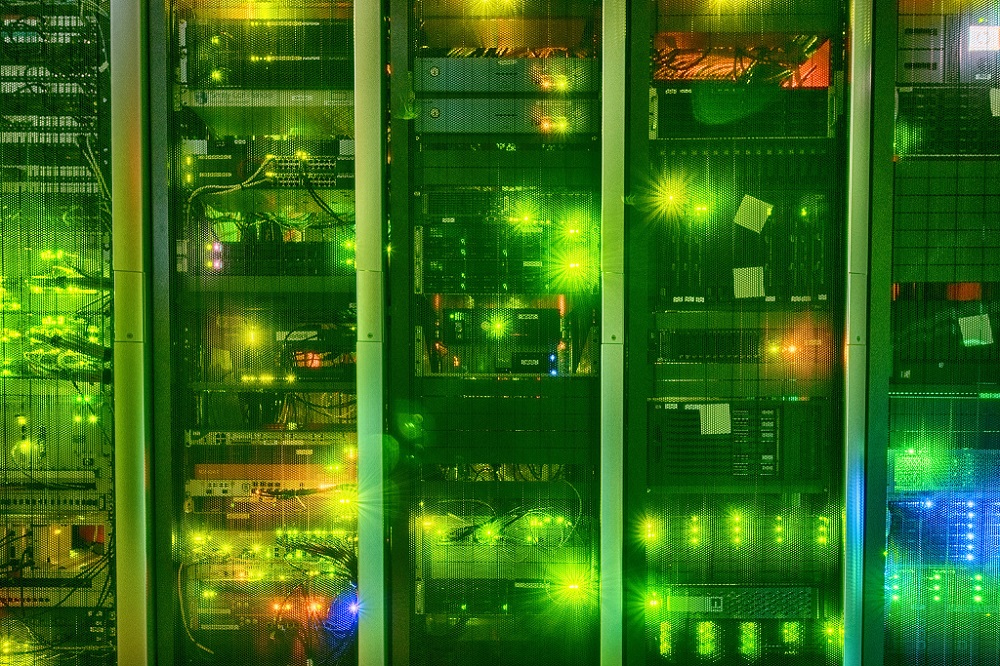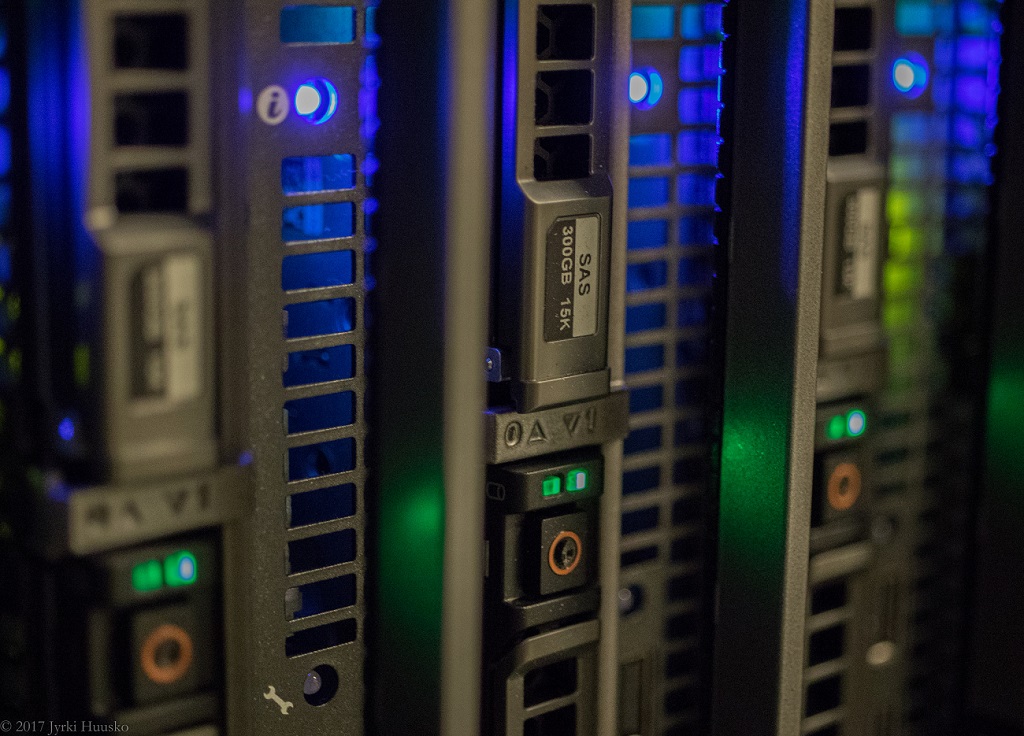Europe will recycle data center iron
The EU approved a project whose task is to develop a methodology for the reuse of obsolete and broken data center equipment. More details - under the cut. / photo Tristan Schmurr CC BY

According to Supermicro, half of the world's data centers update equipment once every 1-3 years. Most decommissioned hardware components can be reused, such as reselling undamaged hard drives or sending printed circuit boards for recycling. This helps reduce the cost of purchasing new equipment. However, according to the same Supermicro report, about 12% of data centers do not.
The new European project CEDaCI, which launched in January 2019, is called to help companies make more efficient use of resources . Its main task is to build a closed-loop economy in the IT environment . We are talking about the reuse of the materials themselves. Cadmium and leadit’s much cheaper to get them from recycled materials, which is possible and will be done.
CEDaCI was organized by researchers from the University of London South Bank, and the European Regional Development Fund will finance the project.
Four countries participate in CEDaCI : Great Britain, France, the Netherlands and Germany. 70% of all European data centers are “concentrated” in them.
The working group included specialists in the production, processing and repair of equipment, as well as cloud providers. By 2021, they will develop and introduce two new technologies that will help data center operators to effectively use their hardware. Participating organizations will also make a list of recommendations for equipment manufacturers that simplify processing or repair.
According to one of the project managers, Deborah Andrews, the initiative will help not only reduce the amount of harmful waste, but also reduce the cost of producing new hardware components. Google’s Sustainability Director, Kate Brandt, agrees with Deborah . According to her, the principles of a closed-loop economy will help data centers save about $ 4.5 trillion over the next decade.
But this approach has its drawbacks . According to a 2017 study, it will lead to a decrease in the cost of finished products and to an increase in demand for it, which, in turn, will affect the growth in the volume of production from primary raw materials. And a single solution to this problem (how to get out of a vicious circle) does not yet exist.

/ photo Jyrki Huusko CC BY
Another difficulty associated with the formation of a closed-loop economy is the lack of a ready implementation plan. According to the former European Commissioner for the Environment, Janez Potočnik, many companies are ready to reuse materials and equipment, but do not know where to start.
The solution to this problem can be large-scale initiatives from international organizations and large corporations, the experience of which will be adopted by small data centers. In 2016, Google already succeededrealize non-waste production in data centers in Taiwan and Singapore. According to representatives of the IT giant, in these data centers, most of the "spent" equipment can be repaired or resold to other companies.
Electronic recycling initiatives are offered not only in Europe. For example, in Japan, a law has been in force since the early 2000s , which encourages equipment manufacturers to reuse individual components and materials. The result of many years of work is that in Japan, about a quarter of the discarded electronics is recycled .
Non-profit organizations also develop a closed-loop economy. Since the late 1990s, the Netherlands has been collecting electronics in Wecycle. According to a 2016 study , the organization's activity reduces the amount of electricity consumed by equipment manufacturers by 17% annually.
World Economic Forum (WEF) experts predictthat the topic of iron reuse will be one of the main in 2019. And it is expected that initiatives like CEDaCI will be joined by a large number of large IT companies. In the future, they will be able to attract the attention of data center operators around the world to the opportunity to resell "hardware" and save money on this.
What we write about in the First Corporate IaaS Blog:
Posts from our Telegram channel:

The essence of the initiative
According to Supermicro, half of the world's data centers update equipment once every 1-3 years. Most decommissioned hardware components can be reused, such as reselling undamaged hard drives or sending printed circuit boards for recycling. This helps reduce the cost of purchasing new equipment. However, according to the same Supermicro report, about 12% of data centers do not.
The new European project CEDaCI, which launched in January 2019, is called to help companies make more efficient use of resources . Its main task is to build a closed-loop economy in the IT environment . We are talking about the reuse of the materials themselves. Cadmium and leadit’s much cheaper to get them from recycled materials, which is possible and will be done.
CEDaCI was organized by researchers from the University of London South Bank, and the European Regional Development Fund will finance the project.
What will the experts do
Four countries participate in CEDaCI : Great Britain, France, the Netherlands and Germany. 70% of all European data centers are “concentrated” in them.
The working group included specialists in the production, processing and repair of equipment, as well as cloud providers. By 2021, they will develop and introduce two new technologies that will help data center operators to effectively use their hardware. Participating organizations will also make a list of recommendations for equipment manufacturers that simplify processing or repair.
CEDaCI expects to increase the volume of reusable components from 65% to 75%, and the volume of processing of raw materials for equipment - from 10% to 19%.
Opinions
According to one of the project managers, Deborah Andrews, the initiative will help not only reduce the amount of harmful waste, but also reduce the cost of producing new hardware components. Google’s Sustainability Director, Kate Brandt, agrees with Deborah . According to her, the principles of a closed-loop economy will help data centers save about $ 4.5 trillion over the next decade.
But this approach has its drawbacks . According to a 2017 study, it will lead to a decrease in the cost of finished products and to an increase in demand for it, which, in turn, will affect the growth in the volume of production from primary raw materials. And a single solution to this problem (how to get out of a vicious circle) does not yet exist.

/ photo Jyrki Huusko CC BY
Another difficulty associated with the formation of a closed-loop economy is the lack of a ready implementation plan. According to the former European Commissioner for the Environment, Janez Potočnik, many companies are ready to reuse materials and equipment, but do not know where to start.
The solution to this problem can be large-scale initiatives from international organizations and large corporations, the experience of which will be adopted by small data centers. In 2016, Google already succeededrealize non-waste production in data centers in Taiwan and Singapore. According to representatives of the IT giant, in these data centers, most of the "spent" equipment can be repaired or resold to other companies.
Similar initiatives
Electronic recycling initiatives are offered not only in Europe. For example, in Japan, a law has been in force since the early 2000s , which encourages equipment manufacturers to reuse individual components and materials. The result of many years of work is that in Japan, about a quarter of the discarded electronics is recycled .
Non-profit organizations also develop a closed-loop economy. Since the late 1990s, the Netherlands has been collecting electronics in Wecycle. According to a 2016 study , the organization's activity reduces the amount of electricity consumed by equipment manufacturers by 17% annually.
World Economic Forum (WEF) experts predictthat the topic of iron reuse will be one of the main in 2019. And it is expected that initiatives like CEDaCI will be joined by a large number of large IT companies. In the future, they will be able to attract the attention of data center operators around the world to the opportunity to resell "hardware" and save money on this.
What we write about in the First Corporate IaaS Blog:
- The world before and after. How life has changed with the advent of DNS Flag Day
- How IaaS helps grow your business: three challenges that the cloud will solve
- Serverless computing in the cloud - the trend of modernity or the need?
Posts from our Telegram channel:
